 |
 |
 |
| |
AUTOMATED VIRAL HEPATITIS (HCV AND HBV) SCREENING: LESSONS ON EXPANSION & SUSTAINABILITY AMIDST THE COVID-19 PANDEMIC
|
| |
| |
AASLD 2020 Nov 11-16
Su H Wang1,2 and Ruth Brogden2, (1)World Hepatitis Alliance, UK, (2)Liver Center & Center for Asian Health, Saint Barnabas Medical Center
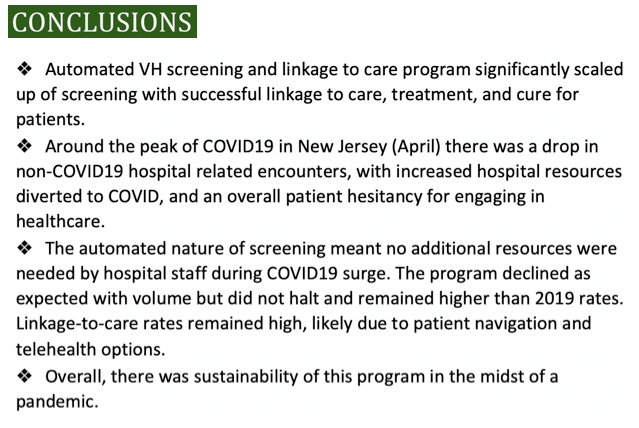
abstract
Background: Cases of acute Hepatitis C (HCV) and Hepatitis B (HBV) have increased from 2010 to 2017 in the US, yet testing gaps remain. An automated emergency department (ED) viral hepatitis (VH) screening program was initiated in 2018 at Saint Barnabas Medical Center in New Jersey . In January 2020, it was expanded to the inpatient setting and modified to include anyone 18 years or over to follow updted Centers for Disease Control (CDC) and USPSTF (US Preventive Services Taskforce) universal HCV screening recommendations . Shortly after program launch, the hospital was hit by CoVID-19 which had a significant impact on admissions and hospital processes
Methods: The electronic medical record (EMR) was modified to automate screening. HBV is triggered by a patient’s country of birth or race, and HCV screening is triggered by age over 18 and no previous testing. The automated HCV (HCV Ab with reflex) or HBV (HBsAg) lab orders lead to an EMR notification to the nurses of patient eligibility and education is provided to patients. Alerts of positive results are automatically sent to nursing, physicians, and the patient navigator (PN). The PN is sent a real-time secure text message and then works to ensure linkage-to-care services (LTC) for the patient to receive follow-up evaluation.
Results: From January-June 2020, 13,239 patients were screened for HCV and 194(1 .5%) were HCVAb+ and 41(0 .3%) HCV RNA+ . For HBV, 3,205 patients were screened and 25 (0 .8%) were HBsAg+ . The expanded inpatient screenings accounted for 3,947 (29 .8%) of the total HCV screenings . Individuals born outside the 1945-65 birth cohort (younger and older) made up 78% of those screened and 51% of the infected . The top 3 foreign-born countries for HBV screenings were Haiti, Ecuador, and Jamaica . LTC rates, defined as attending first medical appointment or already in care, were 82 .9% for HCV and 92% for HBV.
Conclusion: The COVID pandemic has led to an overall decrease of non-COVID hospital related encounters, increased hospital resources diverted to COVID, and an overall patient hesitancy for engaging in healthcare. Automated VH inpatient screening program declined as expected with volume, but did not halt and remained higher than before our universal HCV screening and inpatient modifications. Linkage-to-care rates remained high, likely due to patient navigation and telehealth options. Overall, there was sustainability of this program in the midst of a pandemic.
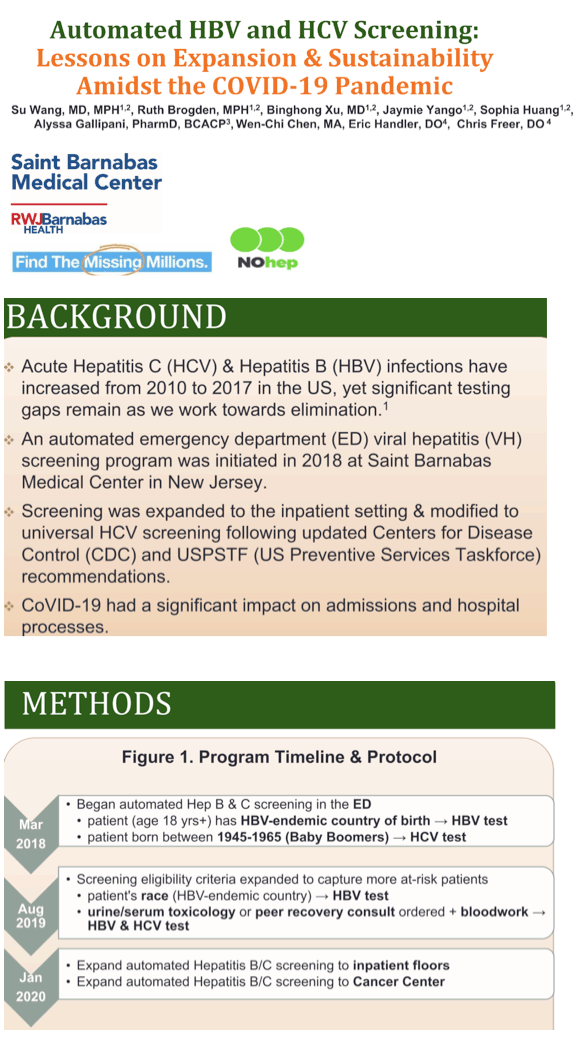
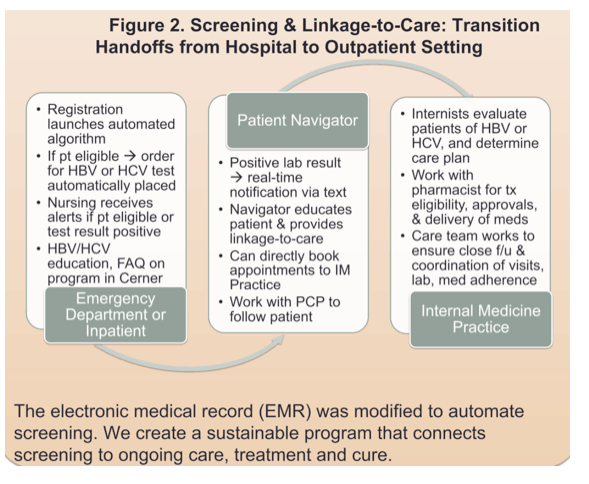
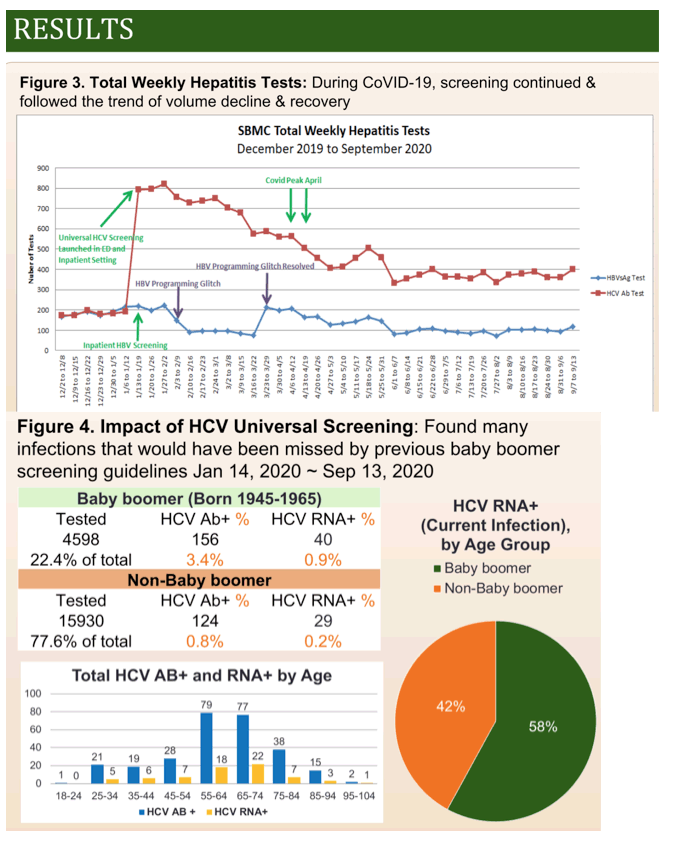
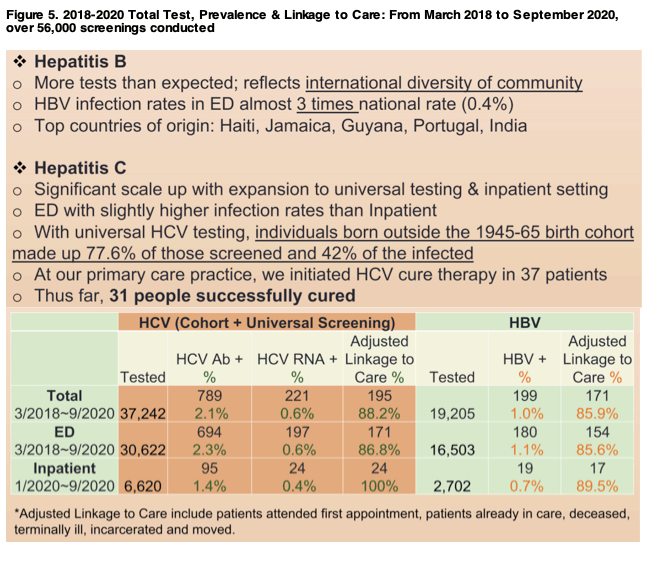
|
| |
|
 |
 |
|
|